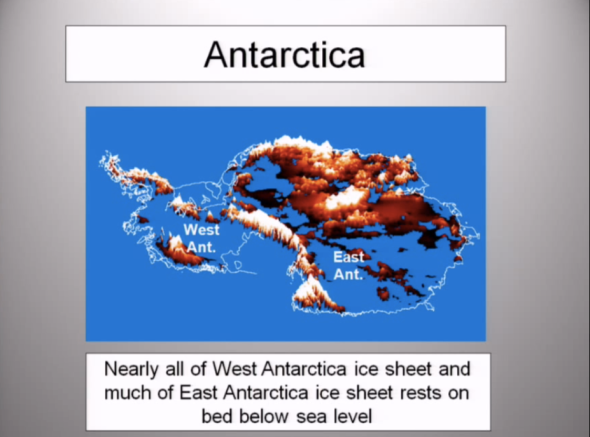Documentary of Research on The Pine Island Glacier and Lecture by Dr. Robert Bindschadler
Posted: January 10, 2012 Filed under: Uncategorized | Tags: 2010, Bindschadler, Glaciers, PIG, sea level, WAIS Leave a commentThis post contains two great videos.
The first is called “The Pine Island Glacier Research Expedition” and is a brilliant documentary in four short parts showing some of the challenges involved in doing science on the ground in Antarctica. It includes amazing footage from the ice-shelf of the Pine Island Glacier (“PIG”), the most active glacier in the West Antarctic Ice Sheet (“WAIS”).
The Pine Island Glacier has been called the “weak underbelly of the west antarctic ice sheet”, because it could be a potential the trigger for a collapse of the WAIS, eventually leading to several meters of sea level rise. (See this Real Climate post by Mauri Pelto for some background of the PIG, including some scientific papers.)
The documentary portraits the first season of the multi-year project “Ocean-Ice Interaction in the Amundsen Sea: the Keystone to Ice-Sheet Stability” (love their logo below)
It focuses on the work on the ground by expedition leader, Dr. Robert Bindschadler, Chief Scientist, Hydrospheric and Biospheric Sciences Laboratory, NASA Goddard Space Flight Center and Dr. David M. Holland, Professor of Mathematics, Center for Atmosphere Ocean Science. The documentary is very professionally produced by POLAR-PALOOZA and PASSPORT TO KNOWLEDGE. The videos can be downloaded from their site. But I have also uploaded them, for your convenience (see below).
The second video is a lecture by Dr. Bindschadler, called “Waking Giants: Ice Sheets in a Warming World (see below).
Dr Bindschadler is an excellent speaker and in his talk he gives an overview of the causes of concern for sea level rise. He is also more frank than is often heard from glaciologists. For example, he says that “there is no physical reason … that those outlet glaciers won’t just eat out the heart of the Greenland ice sheet” (0:51-)
The Documentary (descriptions from POLAR-PALOOZA):
“In part 1, “The Road Less Traveled”, NASA’s Bob Bindschadler and NYU’s David Holland set off for Antarctica and explaining their mission. Then, accompanied by a mountaineer and POLAR-PALOOZA’s embedded cameraman, they head off to the WAIS Divide Camp, jumping off point for their trip to the PIG, the Pine Island Glacier.”


